The Elaterid Clicking Mechanism ...or How Click Beetles Click
Many people would be familiar with Click beetles (family: Elateridae) When disturbed they make a click and jump recklessly into the air. They do this to confuse predators and the technique is also pretty handy for righting themselves if they end up on their back. How do they do it? The mechanism that enables them to jump like this is located on the sternum (underside of the thorax) I always had a hard time photographing this as they would jump just as I focused the camera. Finding a deceased Click beetle one day, I took the opportunity to have a closer look.
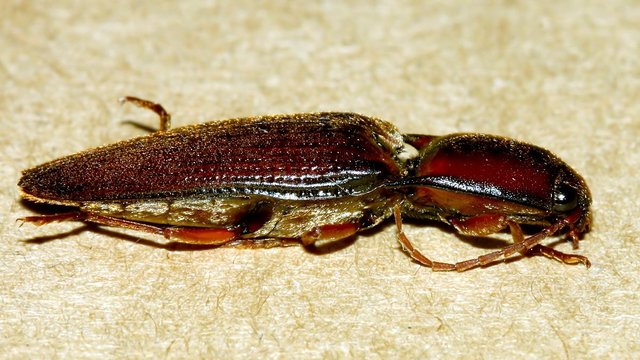
#1 – Lateral view of a Click beetle.
How it works
The first segment of the thorax (prothorax) is loosely hinged to the middle segment (mesothorax). Now lets looks at the underside of these two segments. The plate on the underside of the prothorax is known as the prosternum. It has a backward pointing, spine-like process (prosternal process). It slots neatly into a corresponding cavity on the mesosternum (mesosternal cavity) Hopefully the labelled photograph below will make that a little clearer.
(Click the following images to see a larger version )
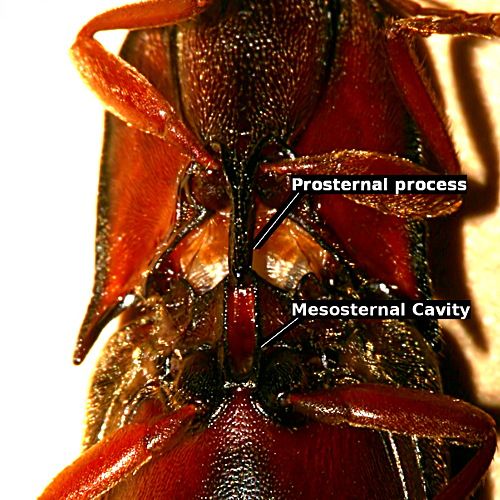
#2 – The clicking mechanism of an Elaterid beetle
OK. So did you get all that? Basically there's a pointy bit and a corresponding groove, or cavity. 🙂 Now, think about what happens when you click your fingers. You put your finger and thumb together and apply pressure until your finger suddenly slips away from your thumb with quite some force. Likewise, the beetle inserts this process (pointy bit) into the cavity and then arches back putting pressure on the process until it suddenly releases from the cavity, springing the beetle into the air like an out of control gymnast. Amazing!
So just how good are they at righting themselves if they land belly up? One study ran several thousand tests, on four species of Elaterids, which showed a success ratio of 2 to 1 if the beetle was initially lying flat on it’s back. The success was shown not to be through the beetles selecting a particular path through the air but by the body shape having a disposition toward attaining an upright position. Randomly dropping dead or live click beetles on the floor gave a similar success rate in landing in an upright position. On an inclined surface the success rate was as high as 85% to 90%. Thus it seems that the increased chance of rolling, or bouncing, also increases the success rate in landing upright.
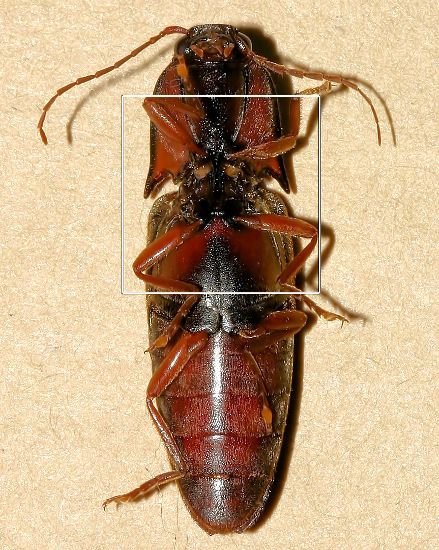
#3 – Ventral view of an Elaterid beetle highlighting the region shown in image #2
References:
- Program and Abstracts of Scientific Papers Presented at the Marine Biological Laboratory, Summer of 1944 – Biol Bull 1944 87: 153-166

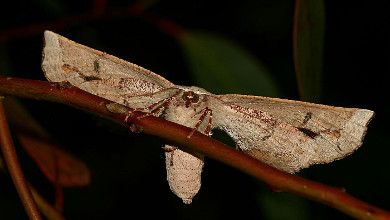
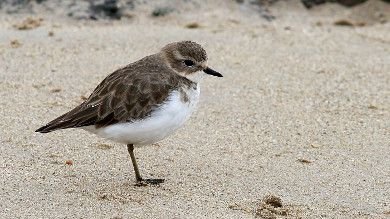
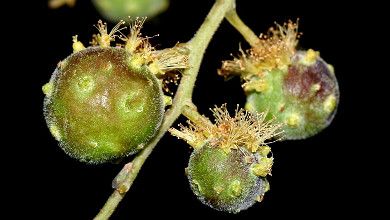
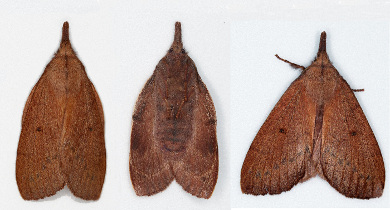
This post received a 20% vote by @mrsquiggle courtesy of @scooter77 from the Minnow Support Project ( @minnowsupport ). Join us in Discord.
Upvoting this comment will help support @minnowsupport.
I love your articles. I learn something every time I read them. They're great!
I have never played with a click beetle. I'm going to have to keep my eyes peeled.
Thanks. It's always good to know if people find them interesting.
Are click beetles the only ones that click or can other beetles do this? Pretty sure we have some beetles that click around here, but I don't think they look like that.
They are the only ones I know of but there are hundreds of thousands of beetles species so there may be others. Flea beetles jump but don't use the same mechanism.
This post received a 1.6% upvote from @randowhale thanks to @mostly.nature! To learn more, check out @randowhale 101 - Everything You Need to Know!